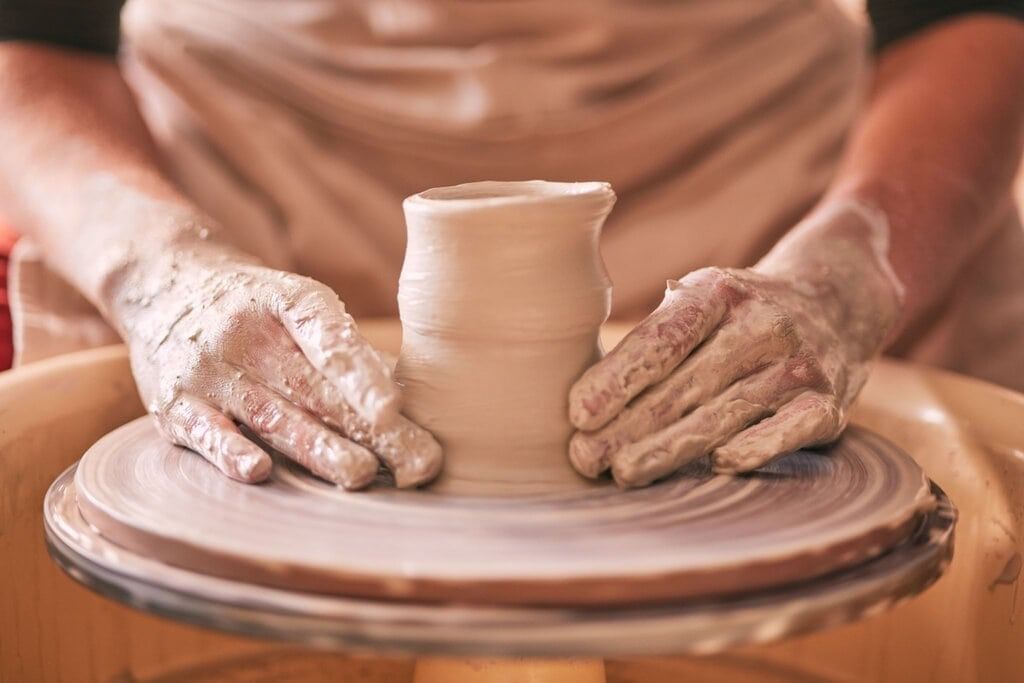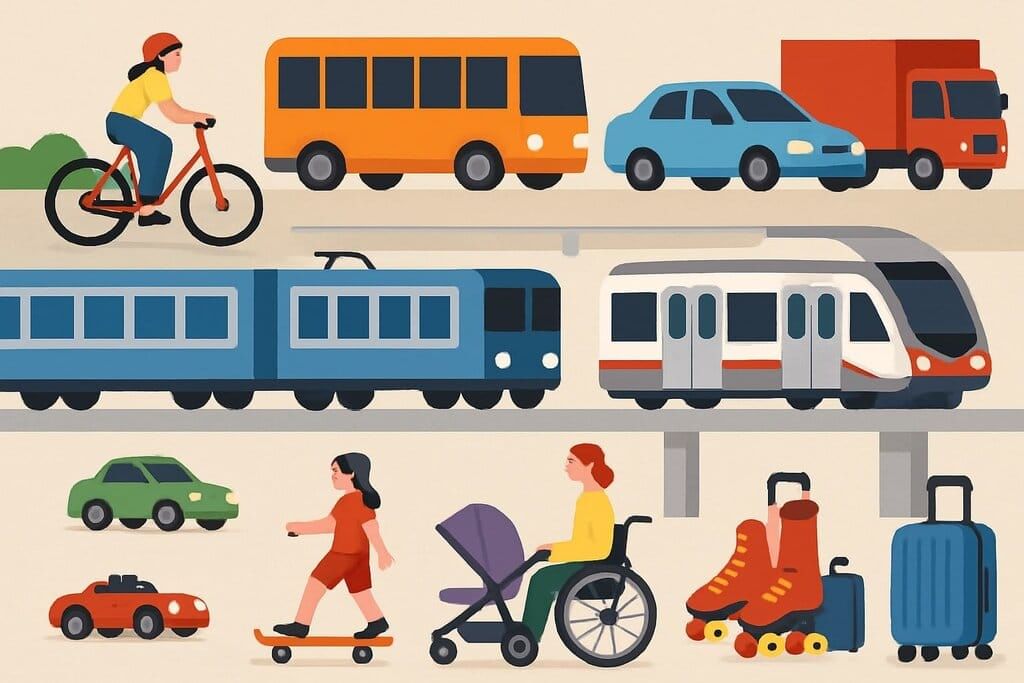Objects on the Move Chapter Notes | Arts (Bansuri) Class 5 - New NCERT PDF Download
| Table of contents |

|
| Introduction |

|
| The Wheel and Its Importance |

|
| Exploring the World of Transport |

|
| Conclusion |

|
Introduction
Have you ever seen a giant wheel spinning at a fair? It’s so much fun to ride! Wheels are super important because they help things move easily. People made the first wheel to shape clay pots. Later, they used wheels on carts and chariots to carry people and things. Today, wheels are everywhere - on bikes, cars, and even toys! Let's learn about them. Potter's Wheel
Potter's Wheel
The Wheel and Its Importance
The wheel is one of the greatest inventions ever! It was first made over 5,000 years ago as a potter’s wheel to create clay pots. Later, people put wheels on carts and chariots to move people and goods from one place to another. Wheels make life easier because they help things roll smoothly instead of dragging them. Imagine trying to move heavy things without wheels—it would be so hard!

Where Do We See Wheels?
Wheels are all around us! Here are some places and objects where we find them:
- Bicycles and scooters
- Cars, buses, and trucks
- Trains and metro rails
- Toy cars and skateboards
- Wheelchairs and strollers
- Roller skates and luggage bags
Think about it: Can you imagine a world without wheels? It would be tough to travel or carry things!
Exploring the World of Transport
Transport is all about moving people and things from one place to another. Vehicles with wheels, like cars and bikes, help us travel faster and easier. Now let's understand the different types of vehicles:
Types of Vehicles
Vehicles come in many types, and they all use wheels to move. Here’s a table that shows different kinds of vehicles and what they’re used for:
| Vehicle | Use |
|---|---|
| Bicycle | For one or two people to ride short distances |
| Car | For small families to travel comfortably |
| Bus | For many people to travel together |
| Truck | For carrying heavy goods |
| Train | For long-distance travel and carrying lots of people or goods |
Conclusion
Wheels and vehicles make our lives so much easier and fun! From bicycles to trains, they help us move around and carry things. Through this chapter, you’ve learned how important wheels are and how to create cool artworks inspired by vehicles. Keep observing the world around you, and let your imagination run wild with new vehicle designs!
|
76 docs|19 tests
|
FAQs on Objects on the Move Chapter Notes - Arts (Bansuri) Class 5 - New NCERT
| 1. What are the key components of a successful visual arts classroom environment? |  |
| 2. How can visual arts pedagogy enhance student learning and engagement? |  |
| 3. What are effective methods for assessing student performance in visual arts? |  |
| 4. What competencies should students develop during the preparatory stage for visual arts? |  |
| 5. What learning outcomes should be expected from a visual arts curriculum? |  |




















